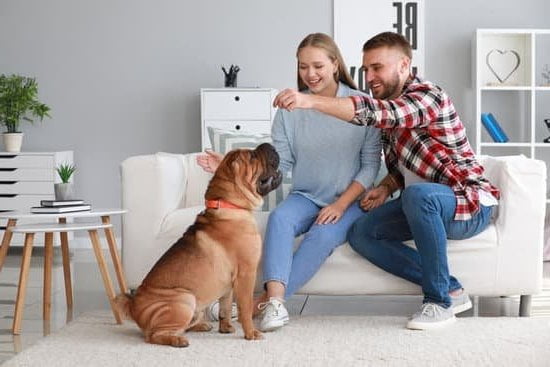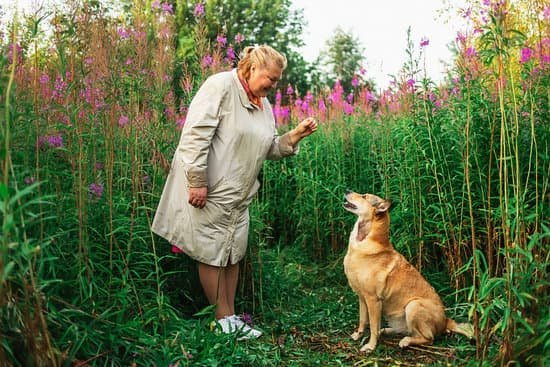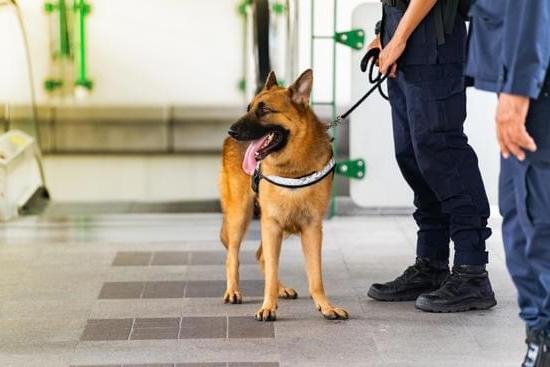Are you wondering how to crate train a dog that barks? Crate training is an essential tool for managing a dog’s behavior, especially when dealing with excessive barking. In this article, we will explore the importance of crate training for a barking dog and provide practical tips and techniques to effectively crate train your furry friend.
Understanding the root cause of your dog’s barking behavior is crucial in addressing the issue. Anxiety and fear are common triggers for excessive barking, and crate training can help alleviate these feelings by providing a safe and secure space for your dog. By understanding the underlying reasons for your dog’s barking, you can tailor your crate training approach to effectively address their specific needs.
Choosing the right crate for your barking dog is also key to successful crate training. The size, material, and comfort of the crate all play a significant role in creating a positive association with the space.
Additionally, introducing the crate in a gradual and positive manner will help your dog acclimate to this new environment and reduce their barking tendencies. Stay tuned as we delve into these topics and more in this comprehensive guide on how to effectively crate train a dog that barks.
Understanding the Root Cause of Barking Behavior
When it comes to crate training a dog that barks, it is essential to understand the root cause of their barking behavior. More often than not, barking in dogs can be attributed to feelings of anxiety, fear, or distress. This could be triggered by separation anxiety, unfamiliar surroundings, loud noises, or even previous negative experiences with crates. By addressing these underlying emotions, pet owners can create a solid foundation for successful crate training.
Anxiety and fear are common culprits behind excessive barking in dogs. Understanding this is crucial in order to address the issue effectively. Forcing a dog into a crate without considering their emotional state can exacerbate their anxiety and lead to louder and more persistent barking. Instead, it is important to approach crate training with empathy and patience.
To address anxiety and fear-related barking when crate training a dog, it is important to gradually introduce the crate in a positive manner. This involves creating positive associations with the crate through treats, toys, and comforting items such as blankets or clothing with familiar scents. Additionally, allowing the dog to explore the crate at their own pace can help alleviate any fears they may have associated with it.
| Causes of Barking Behavior | Addressing Emotions |
|---|---|
| Anxiety | Gradual introduction of the crate |
| Fear | Positive association with the crate |
Choosing the Right Crate
When it comes to crate training a dog that barks, choosing the right crate is essential for their comfort and overall success in the training process. The size, material, and comfort of the crate all play significant roles in ensuring that your barking dog feels safe and secure while inside the crate.
Choosing the Right Size Crate
One of the most important considerations when choosing a crate for a barking dog is the size. The crate should be big enough for your dog to stand up, turn around, and lie down comfortably, but not so large that they can use one corner as a bathroom area. A crate that is too big may not provide the sense of security and den-like environment that dogs instinctively seek out.
Material and Comfort
The material of the crate should also be taken into account. Dogs who bark out of anxiety or fear may benefit from a covered crate to create a more secure and enclosed space. Additionally, providing comfortable bedding or a familiar blanket inside the crate can help make it a more inviting space for your barking dog.
Consider Your Dog’s Preferences
It’s important to consider your individual dog’s preferences when selecting a crate. Some dogs may prefer an open-wire mesh crate while others may feel more comfortable in a solid plastic or wooden crate. Observing your dog’s behavior and body language can offer insight into which type of crate would best suit their needs.
By carefully considering these factors when choosing the right crate for your barking dog, you can set them up for success in their crate training journey. Creating a comfortable and secure environment will help alleviate anxiety and fear, making it easier to introduce them to their new designated space.
Introducing the Crate
When it comes to crate training a dog that barks, introducing the crate in a positive way is essential. The goal is for your dog to see the crate as a safe and comfortable space, rather than a place of punishment or confinement. Start by placing the crate in an area of your home where your dog spends a lot of time, such as the living room or kitchen.
Leave the door of the crate open and allow your dog to explore it at their own pace. You can encourage exploration by placing treats or toys inside the crate to create a positive association.
Once your dog seems comfortable entering the crate on their own, you can begin to associate the crate with positive experiences. For example, feed your dog their meals near the crate, gradually moving the food bowl closer to the entrance over several days until eventually they are eating inside the crate. This helps establish a positive association with the crate as a place where good things happen.
As your dog becomes more accustomed to being near and inside the crate, you can start working on acclimatization. Gently close the door for short periods while your dog is eating or playing, gradually increasing the amount of time they spend in the closed crate.
It’s important to go at your dog’s pace and never force them into or out of the crate. This gradual acclimatization helps build trust and comfort with being in an enclosed space, ultimately leading to successful crate training for a barking dog.
In addition, it’s important not to inadvertently reinforce barking behavior during this process. If your dog starts barking while in or near the crate, avoid giving them attention or letting them out until they have calmed down. This helps prevent them from associating barking with getting what they want and reinforces quiet behavior instead.
Establishing a Routine
Feeding Time
When it comes to feeding your barking dog in the crate, it’s important to create a positive association with the space. Start by placing your dog’s food bowl at the back of the crate and gradually move it towards the entrance as they become more comfortable.
It’s important that you do not close the door during feeding time initially and allow them to come in and out of their own accord until they build a sense of trust and comfort.
Sleeping Time
To help your barking dog associate the crate with a safe and cozy sleeping area, place comfortable bedding or blankets inside. Encourage them to enter the crate, using treats or toys as incentives, so they begin to understand that this is their own personal space. Consistency is key here; make sure they sleep in the same location every night.
Alone Time
Gradually introduce alone time in the crate by starting small – leave for short periods at first and then gradually increase the duration. It’s essential to remain calm and composed during departures and arrivals so that your barking dog does not associate being alone with negative experiences. Providing toys or treats can also distract them from any anxiety or fear associated with being left alone in their crate.
By establishing a routine for feeding, sleeping, and alone time in the crate, you are helping your barking dog feel safe, secure, and comfortable within this space. With patience and consistency, you can effectively reduce barking behavior while building a stronger bond with your pet.
Addressing Barking in the Crate
Crate training a dog that barks can be challenging, but with the right techniques, it is possible to calm and redirect their behavior. When it comes to addressing barking in the crate, it’s important to understand that dogs bark for a variety of reasons, including anxiety, fear, boredom, or seeking attention. Therefore, it’s crucial to address these root causes before implementing specific techniques for calming and redirecting their behavior.
One effective technique for calming a barking dog in the crate is using positive reinforcement. This involves rewarding your dog when they exhibit calm and quiet behavior inside the crate. You can use treats, praise, or even toys to reinforce this positive behavior. Additionally, ensuring that your dog has plenty of mental and physical stimulation outside of the crate can help reduce their anxiety and boredom, leading to less barking when inside the crate.
Another technique for addressing barking in the crate is desensitization. This involves gradually acclimating your dog to being in the crate for longer periods of time without reacting negatively. By starting with short intervals and gradually increasing the time spent in the crate, you can help your dog become more comfortable and less anxious about being confined. It’s important to remain patient and consistent during this process to ensure success.
Overall, addressing barking in the crate requires patience, consistency, and understanding of your dog’s individual needs. By implementing positive reinforcement, desensitization techniques, and providing ample mental and physical stimulation outside of the crate, you can effectively calm and redirect your barking dog’s behavior while in their crate. With time and dedication, you can help your dog become more comfortable with crate training and develop a stronger bond with them as well.
Consistency Is Key
When it comes to crate training a dog that barks, consistency is absolutely key. It’s important to remember that this process will not happen overnight and will require patience, dedication, and a consistent approach. Here are some tips on how to maintain consistency in your crate training efforts:
1. Set a routine: Establishing a consistent routine for your dog’s time in the crate is crucial. This includes feeding, sleeping, and alone time in the crate. By creating a predictable schedule, your dog will start to feel more comfortable and secure in their crate.
2. Use positive reinforcement: Whenever your dog exhibits quiet behavior in the crate, be sure to praise and reward them with treats or verbal cues. Positive reinforcement is an effective way to encourage desired behavior and create a positive association with being in the crate.
3. Avoid giving in to barking: It can be tempting to let your dog out of the crate when they bark persistently, but this will only reinforce the behavior. Instead, wait for a moment of quiet before opening the door, then reward them for their calmness. Consistently sticking to this rule will help reinforce the idea that calm behavior is rewarded.
Remember that every dog is unique, so it’s important to be patient and adaptable as you work on crate training them. By consistently following these strategies and showing patience and understanding, you can help your barking dog become more comfortable and quiet when inside their crate.
Troubleshooting
Crate training a dog that barks can be challenging, and it’s not uncommon to encounter setbacks along the way. Whether your dog is struggling with anxiety, fear, or simply dislikes being confined, it’s important to approach crate training with patience and understanding. Here are some tips for troubleshooting common issues and persisting with crate training:
1. Identifying the Root Cause: If your dog is barking excessively in the crate, it’s essential to determine the underlying cause. Is your dog anxious when left alone? Does he feel uncomfortable in the crate? Understanding the root of the problem will help you address it more effectively.
2. Gradual Acclimatization: If your dog is showing resistance to the crate, take a step back and slow down the acclimatization process. Start by leaving treats near the crate and gradually move them inside. Encourage positive associations by placing your dog’s favorite toys or blanket inside the crate.
3. Consistent Training: Consistency is key when dealing with setbacks in crate training. Stick to a routine for feeding, sleeping, and alone time in the crate. Avoid giving in to your dog’s barking demands, as this will only reinforce unwanted behavior. Instead, use positive reinforcement techniques to encourage quiet behavior.
Remember that every dog is unique, and there may be trial and error involved when addressing setbacks in crate training. Stay patient, remain consistent with your training methods, and celebrate even small successes along the way.
By persisting with crate training, you can help your barking dog overcome anxiety and fear while building a stronger bond based on trust and positive experiences inside their crate.
Conclusion
Crate training a dog that barks can be a challenging but ultimately rewarding experience for both you and your furry companion. By understanding the root cause of your dog’s barking behavior, choosing the right crate, and establishing a routine, you can successfully calm and redirect this behavior. Consistency is key in training and reinforcing a quiet crate experience for your dog.
By implementing positive association and gradual acclimatization with the crate, as well as addressing barking using calming techniques, you can help your dog feel more secure and comfortable in their crate. It’s important to remember that setbacks may occur, but persisting with crate training will eventually lead to success.
Ultimately, successfully crate training a barking dog not only creates a quieter and more peaceful environment for both you and your pet but also strengthens the bond between you. With patience, love, and dedication, you can celebrate the success of having a quiet, crate-trained dog by your side.
So if you have ever wondered how to crate train a dog that barks, just remember that it takes time and effort to achieve this goal – but it is definitely worth it in the end.
Frequently Asked Questions
How Do I Get My Dog to Stop Barking When Crated?
One way to get your dog to stop barking when crated is by ensuring they are properly exercised and mentally stimulated before being crated. Providing them with toys or treats can also help keep them quiet.
How Long Do Dogs Bark When Crate Training?
The duration of barking during crate training varies from dog to dog. Some may bark for a few minutes, while others may take longer to adjust. Consistency and patience are key in helping them become comfortable with the crate.
How Do You Muffle a Dog Barking in a Crate?
To muffle a dog barking in a crate, you can try using a blanket or towel to cover the crate, which can help reduce visual stimuli that may be triggering the barking. Additionally, playing soothing music or white noise can help drown out the barking.

Welcome to the blog! I am a professional dog trainer and have been working with dogs for many years. In this blog, I will be discussing various topics related to dog training, including tips, tricks, and advice. I hope you find this information helpful and informative. Thanks for reading!





